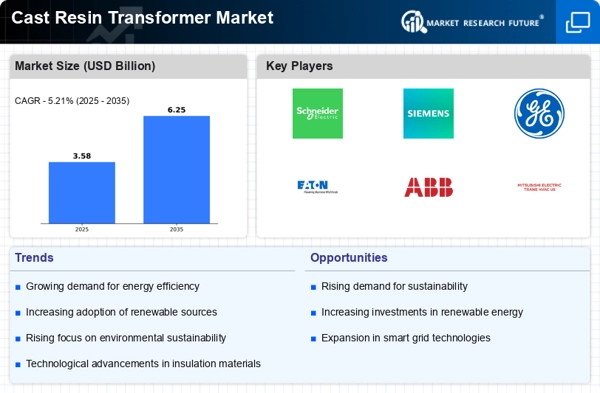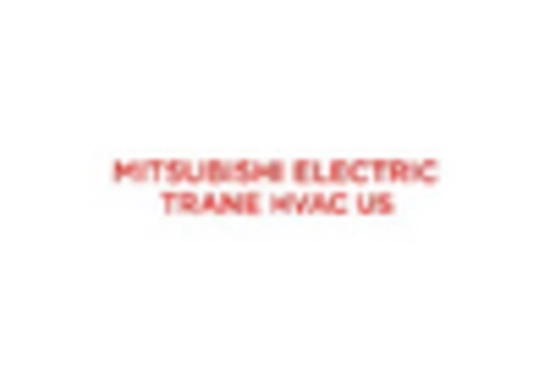Increased Demand for Renewable Energy
The rising emphasis on renewable energy sources is a pivotal driver for the Cast Resin Transformer Market. As nations strive to meet sustainability goals, the integration of wind and solar power into the energy grid necessitates reliable and efficient transformers. Cast resin transformers, known for their durability and low maintenance, are increasingly favored in renewable energy applications. According to recent data, the renewable energy sector is projected to grow at a compound annual growth rate of over 8% in the coming years, further propelling the demand for cast resin transformers. This trend indicates a shift towards cleaner energy solutions, where the Cast Resin Transformer Market plays a crucial role in facilitating the transition.
Urbanization and Infrastructure Development
Urbanization continues to accelerate, leading to increased infrastructure development, which significantly impacts the Cast Resin Transformer Market. As cities expand, the demand for reliable power distribution systems rises. Cast resin transformers are particularly suited for urban environments due to their compact size and ability to operate in confined spaces. The construction of new residential and commercial buildings, along with the modernization of existing infrastructure, is expected to drive the market. Recent statistics suggest that urban areas are projected to house nearly 68% of the world's population by 2050, creating a substantial need for efficient power solutions. This urban growth presents a lucrative opportunity for the Cast Resin Transformer Market.
Rising Investment in Smart Grid Infrastructure
Rising investment in smart grid infrastructure is emerging as a crucial driver for the Cast Resin Transformer Market. As utilities and governments prioritize the modernization of electrical grids, the need for advanced transformers becomes apparent. Cast resin transformers are integral to smart grid systems due to their reliability and efficiency. The transition to smart grids involves the integration of renewable energy sources, energy storage systems, and advanced monitoring technologies, all of which require robust transformer solutions. Recent data suggests that investments in smart grid technologies are expected to exceed $100 billion by 2025, creating a substantial opportunity for the Cast Resin Transformer Market to thrive in this evolving landscape.
Technological Advancements in Transformer Design
Technological advancements in transformer design are reshaping the Cast Resin Transformer Market. Innovations such as improved insulation materials and enhanced cooling systems are leading to more efficient and reliable transformers. These advancements not only increase the lifespan of transformers but also reduce energy losses during operation. The introduction of smart grid technologies further enhances the functionality of cast resin transformers, allowing for better monitoring and management of electrical systems. As the demand for energy efficiency rises, the market for technologically advanced cast resin transformers is expected to expand. Industry forecasts indicate that the market could witness a growth rate of approximately 6% annually, driven by these technological improvements.
Growing Focus on Safety and Environmental Regulations
The growing focus on safety and environmental regulations is a significant driver for the Cast Resin Transformer Market. Governments and regulatory bodies are increasingly implementing stringent standards to ensure the safety of electrical installations and minimize environmental impact. Cast resin transformers, which are non-toxic and environmentally friendly, align well with these regulations. Their ability to operate without the risk of oil leaks makes them a preferred choice in sensitive environments. As industries seek to comply with these regulations, the demand for cast resin transformers is likely to increase. Recent reports indicate that compliance with environmental standards could lead to a market growth of around 5% in the coming years, highlighting the importance of safety in the Cast Resin Transformer Market.

















Leave a Comment